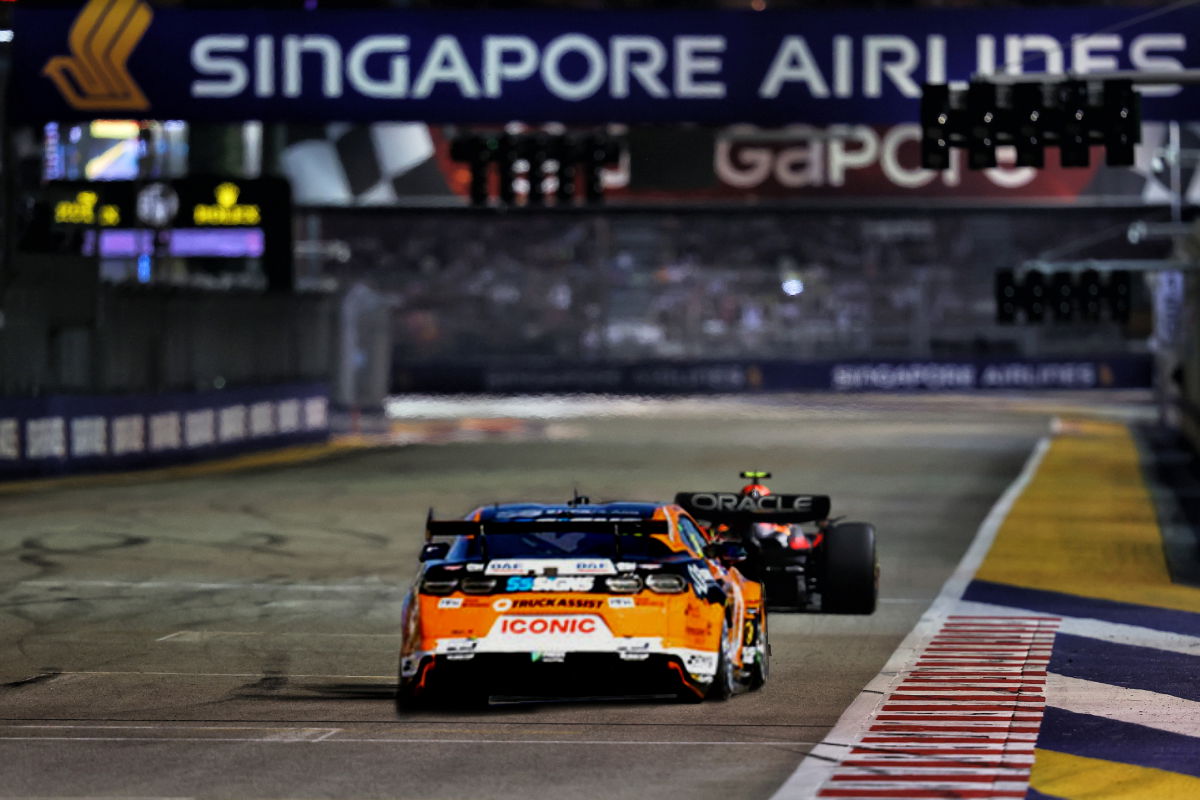

Look below the surface of the current chatter surrounding Supercars and Singapore, and a fascinating picture emerges.
The Singapore Grand Prix has established itself as one of Formula 1’s blue riband events.
A challenging circuit in a comparatively exotic location with an exciting atmosphere and the uniqueness of a night race.
For Australians, it’s also comparatively easy to get to and, dollar-for-dollar, similar cost-wise to the Australian Grand Prix.
But that is not why Supercars is interested in the event.
There have long been rumours of the Australian touring car championship targeting an event at Marina Bay in support of Formula 1.
Discussions are ongoing, as previously reported by Speedcafe, and while the concept has its critics – our own Roland Dane, for instance – it has its merits.
Dane argued that every attempt to export Supercars has failed.
That may be the case, but we are in a new era. The world has moved on.
Supercars’ new era
Once, Supercars was a highly localised competition with unique cars to Australia and Australian motorsport.
It had little relevance or appeal internationally beyond novelty.
With the introduction of Gen3, the product is universal. The cars on the road in Australia are the same as those in Asia, the United States, and Europe.
Immediately, that localisation issue is circumvented. Rather than being an ‘Australian touring car’ competition, it’s just a ‘touring car’ competition.
And that opens doors commercially.
Currently, Supercars is limited to brands that want exposure locally.
That typically means brands with a national appeal or international brands looking for market awareness in Australia.
Supercars has nothing to offer for companies looking to raise their profile internationally.
Conversely, it is more attractive to international brands as events in Singapore, for instance, allow it to cross markets.
Racing in different markets could also make the category more appealing to new manufacturers.
Australia is a small market with little appeal. A successful racing series with a footprint in multiple markets is valuable.
The desire from Supercars to venture into Singapore is not to add another race but a first step at expanding the competition’s commercial appeal.
There are other opportunities: television rights, branding opportunities, and race hosting fees (should it prove successful).
Singapore a Supercars starting point
Supercars in Singapore is about more than just Singapore.
It is a toe-in-the-water, a way to take the product to a friendly audience where interest in motorsport is proven.
It’s a test case; can Supercars spark interest from others? Is there a pathway to making it viable?
That event doesn’t even need to wash its own face. In the first instance, it can be a loss leader and a marketing cost, from which income can be derived through other channels.
The critical question is, can the event open those doors?
A two- or three-year stint in Singapore will offer an answer.
It’s a low-risk venture that will cost money, but it’s a case of spending it to make it.
The end game here is not for Supercars to race as a Formula 1 support category but to garner commercial interest internationally to allow the category to expand.





















Discussion about this post